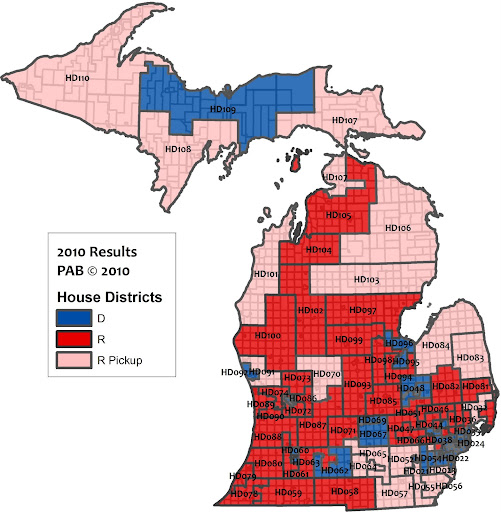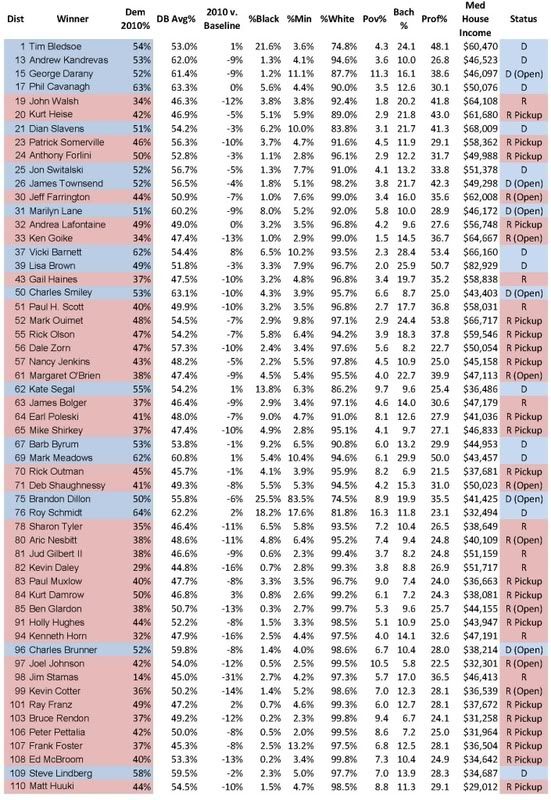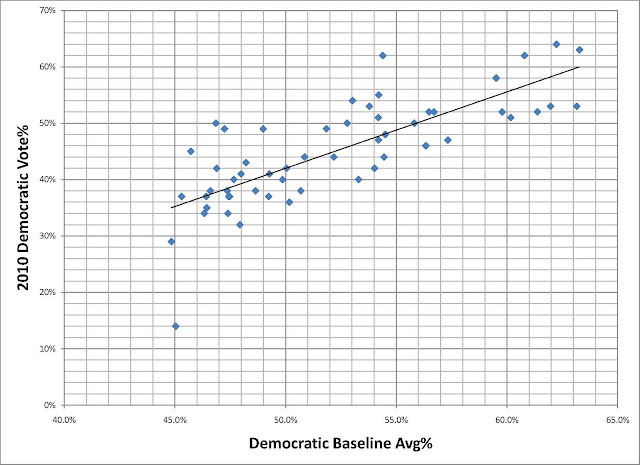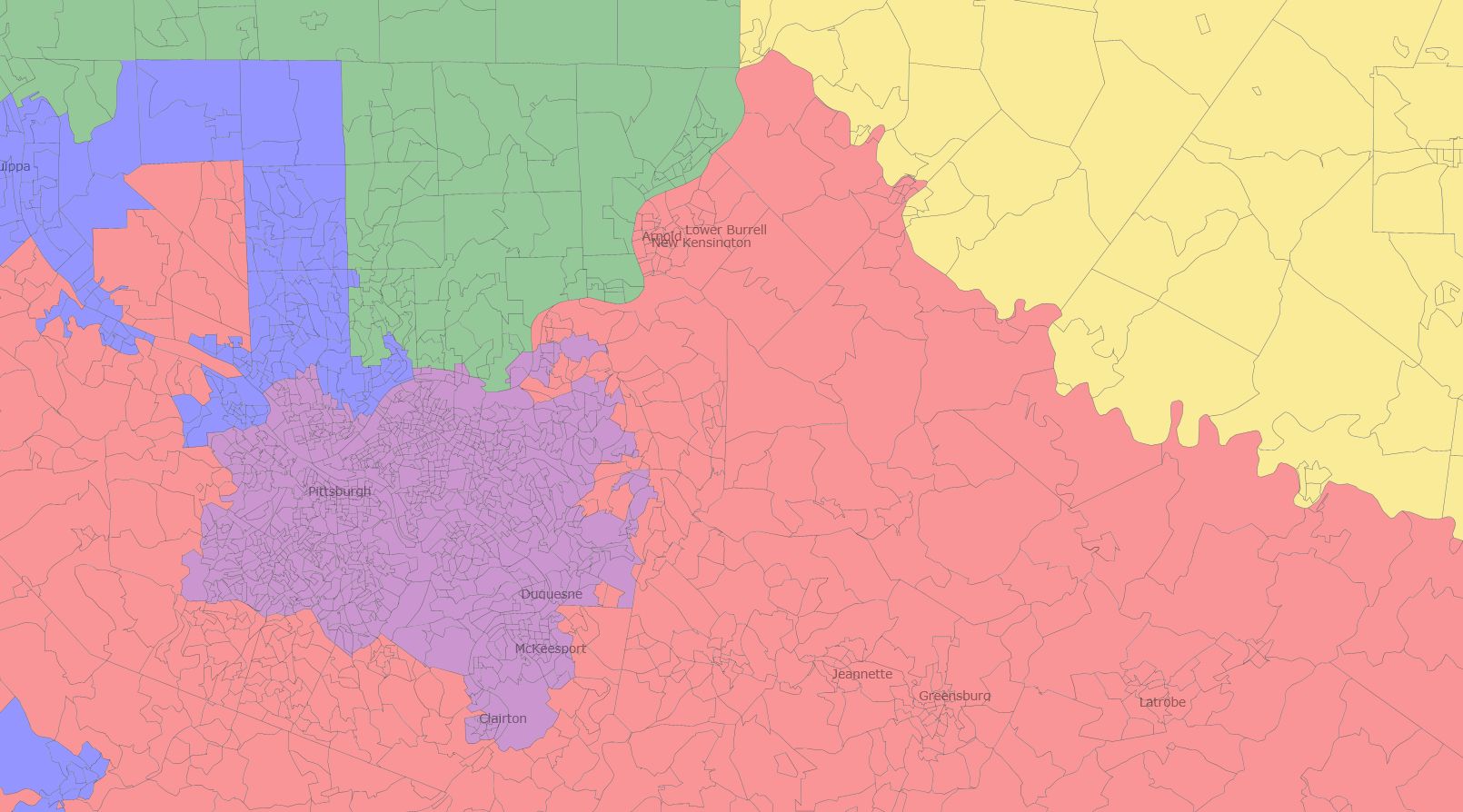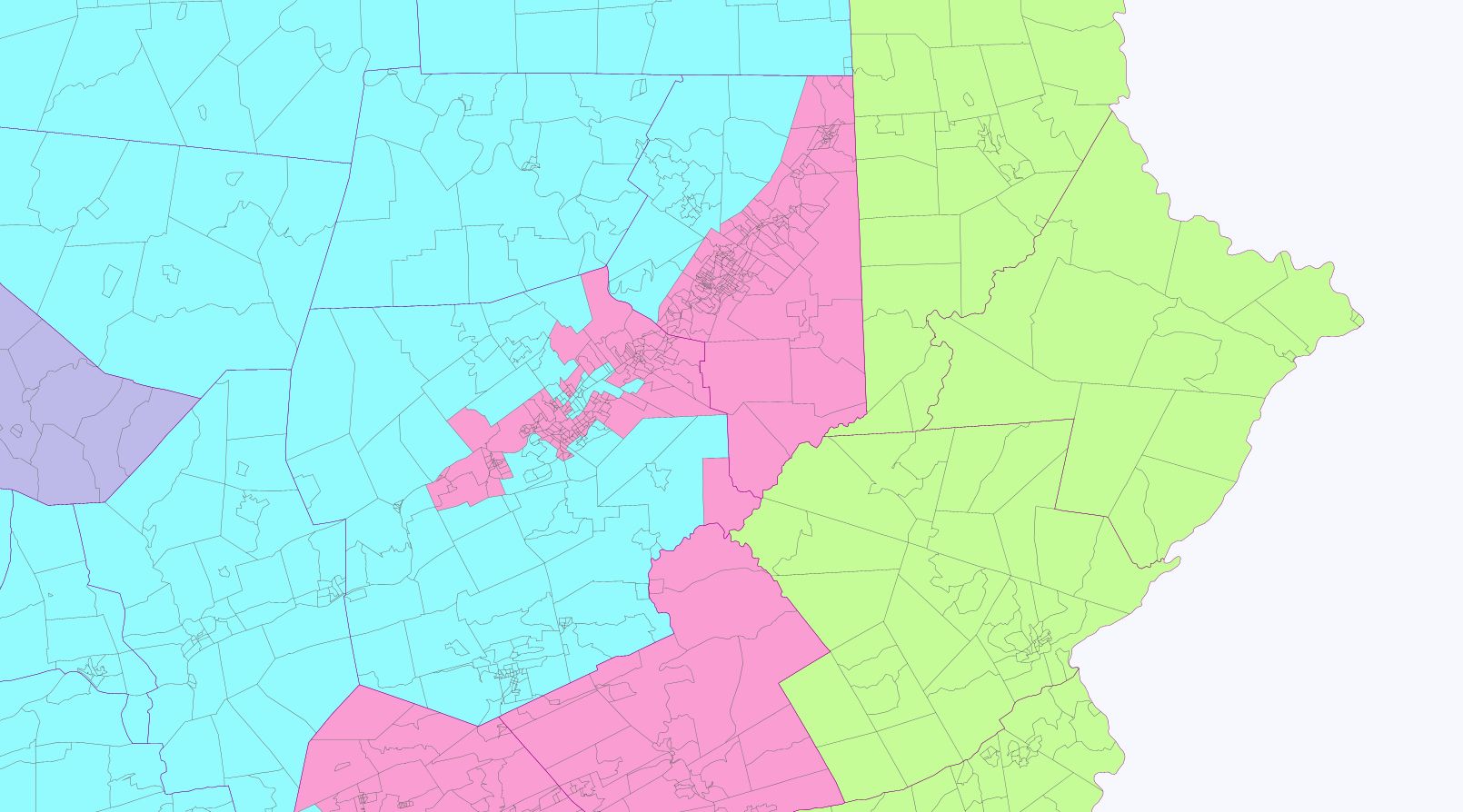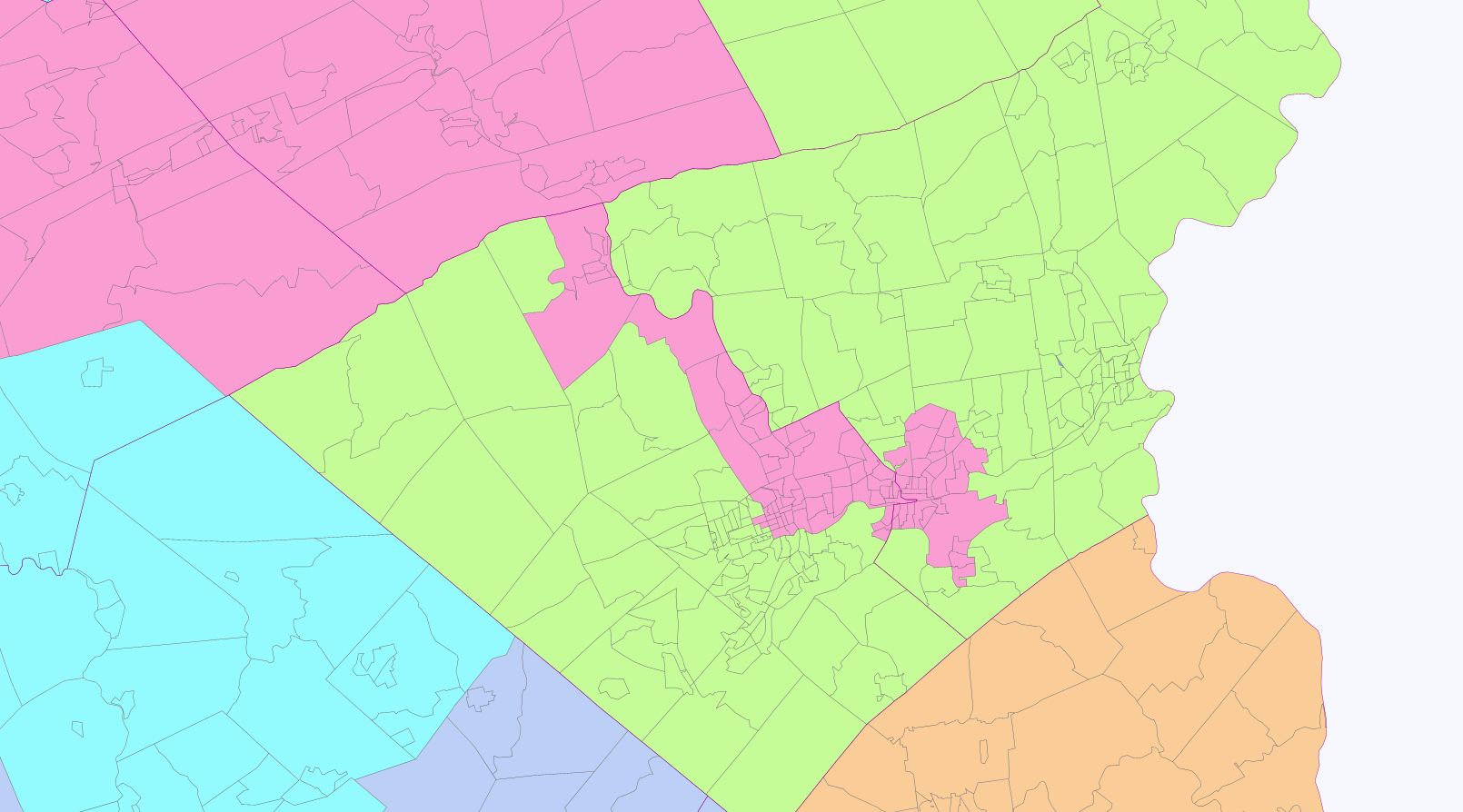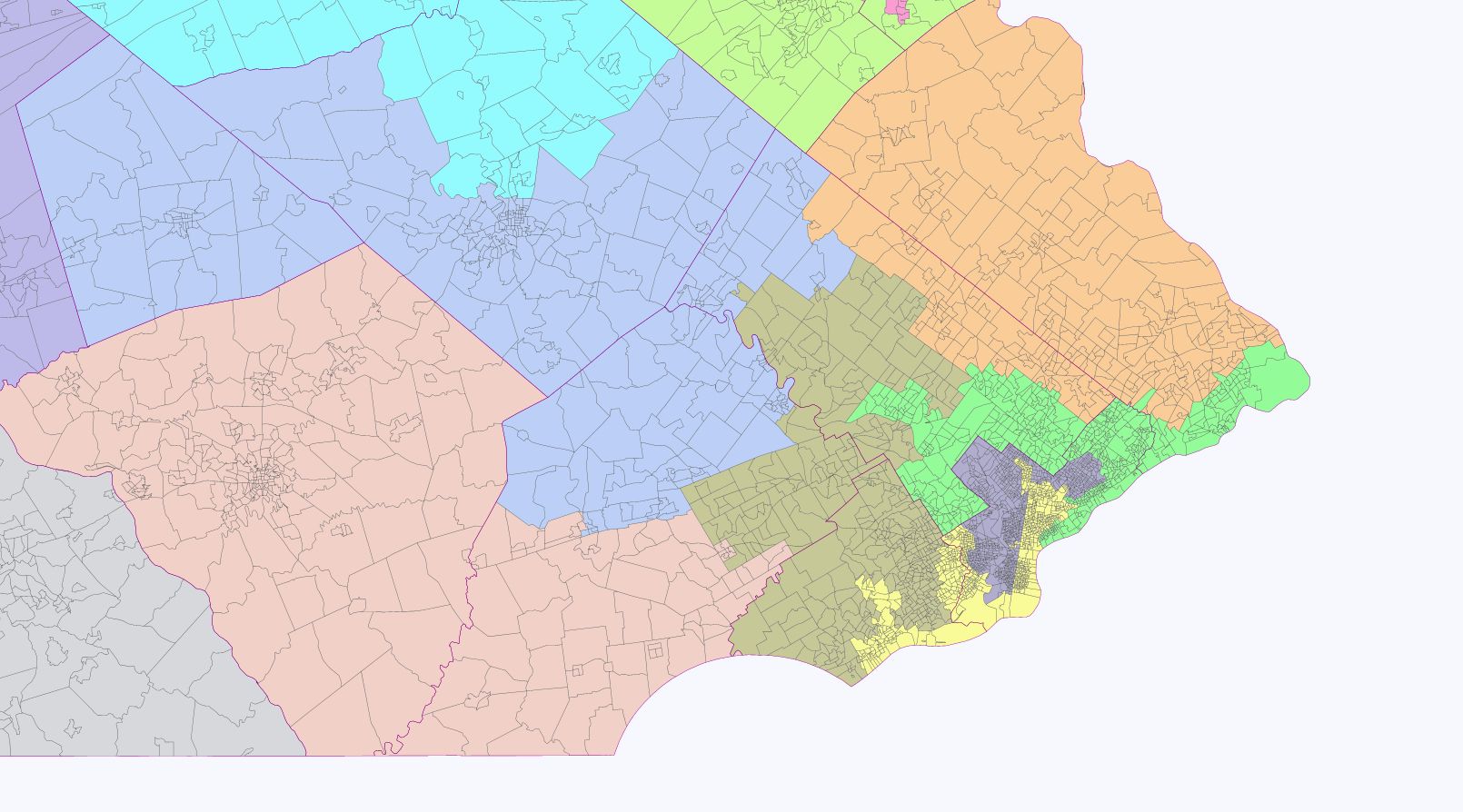Republicans had a great night in Pennsylvania this November, which makes drawing a decent map for them really hard.
To make matters worse for them, they won in all the wrong places. They knocked off Carney and Kanjorski, whereas if they’d taken only one of them they could have packed the survivor’s district and used the redder bits of his district to make Charlie Dent a little later. They held PA-6 and took back PA-7 and PA-8, meaning that it’s that much harder to protect their representatives in the suburban Philadelphia area, whereas if the Dems had held one seat then it would have been possible to shift the other districts further from the city.
And they didn’t knock off Critz or Altmire, meaning that they’ll have to work a little harder to give them unwinnable districts.
All in all, they’d have a lot more options for the coming redistricting if they’d won a few less districts and if more of them had been in western PA.
But what’s done is done. Republicans can enjoy their gains for now and they’ll just have to work to try to keep them – because there’s no way they’ll willingly concede seats in the next redistricting.
This map is an attempt to strengthen the Republican freshmen and to eliminate the last two Democratic representative in western Pennsylvania outside Pittsburgh. By giving Tim Holden a strongly Democratic district, it gives the Republicans a chance of a 13-5 advantage out of the state.
But this is not without risk. McCain got beaten by ten points in Pennsylvania and five Republicans in this new map will represent districts he lost. If they all flipped, Democrats would have a 10-8 advantage out of the state.
On the other hand, it’s almost impossible to defend all twelve Republican congressmen in the state effectively. This map improves the prospects of each Republican in a district Obama won by at least four points net. I won’t pretend this map doesn’t have weaknesses, but it’s probably the best the Republicans can do.
As an added challenge, I endeavoured to keep townships together, as I don’t think the advantage gained by splitting them outweighs the negative press received for doing so. This doesn’t apply in Philadelphia, as the Republicans have no reason to care about a backlash there.
PA-1
Incumbent: Bob Brady
Population |
White |
Black |
Hispanic |
Asian |
|---|
684861 |
35 |
50 |
8 |
5 |
|
Obama % |
McCain % |
|---|
Old lines |
88 |
12 |
|---|
New lines |
87 |
12 |
|---|
% change |
-1% |
+0% |
|---|
Like I said, redistricting isn’t going to be as much fun for the Republicans as it might have been. If they want to enjoy themselves, they’ll have to make their own entertainment.
In this map I represented that by drawing the new PA-1 as minority-majority (which the Republicans would be mad not to try for, as with no retrogression they can create two Democratic vote sinks that will be almost impossible to eliminate).
I also noted that according to his candidate petitions Bob Brady lives in Ward 34 Precinct 34, which is on the very western edge of West Philadelphia. I therefore slipped it into Allyson Schwartz’s district.
Now, Bob Brady is quite capable of moving a few blocks back into the district, assuming election law actually requires him to. And he’s represented a minority-majority district for long enough that making it 50% black won’t have him quaking in his boots. But still, Republicans have to get their giggles somehow. And spite is the gift that keeps on giving.
The district itself is somewhat less interesting. It keeps its strip through southern Delaware County to Chester, as well as the areas of Darby, Yeadon and Sharon Hill, and combines these these with south, west and central Philadelphia, together with portions of north Philly and much of Kensington.
PA-2
Incumbent: Chaka Fattah
Population |
White |
Black |
Hispanic |
Asian |
|---|
685048 |
34 |
50 |
10 |
3 |
|
Obama % |
McCain % |
|---|
Old lines |
90 |
10 |
|---|
New lines |
88 |
12 |
|---|
% change |
-2% |
+2% |
|---|
Chaka Fattah is harder to draw out, so Republicans will have to settle for just giving him the biggest district in the state population-wise.
There’s very little to say about this district. It narrowly remains above 50% black and takes in the rest of Philadelphia, bar small portions of the Northeast and Northwest. Much of it is new to Fattah, but I can’t imagine him facing too many problems with it.
PA-3 (was PA-13)
Incumbent: Allyson Schwartz, Bob Brady, Patrick Murphy
Population |
White |
Black |
Hispanic |
Asian |
|---|
681192 |
83 |
8 |
3 |
4 |
|
Obama % |
McCain % |
|---|
Old lines |
59 |
41 |
|---|
New lines |
64 |
35 |
|---|
% change |
+5% |
-6% |
|---|
It’d be much easier to pack the Democratic vote if the Philadelphia suburbs hadn’t elected so many Republicans this year. As a result, the task is largely left to Schwartz, who gets a district that’s absolutely safe in the hope she doesn’t get ideas like running for governor any time soon.
I’ve renumbered the districts, because if you’re going to gerrymander you should at least care enough to cover your tracks by numbering the districts in a vaguely logical order (even if my order does involve flying betwen north and south Pennsylvania like a fairground ride.)
The district keeps its core in southern Montgomery County and Northeast Philadelphia, although much of northern Montgomery is moved elsewhere. To this it adds Northwest Philadelphia west of Wissahickon Creek and north of Cresheim Creek, plus Bensalem southern parts of Levitttown in Bucks County. In doing so, it also mops up the home of Patrick Murphy, in an attempt to keep him out of Fitzpatrick’s hair.
PA-4 (was PA-8)
Incumbent: Mike Fitzpatrick
Population |
White |
Black |
Hispanic |
Asian |
|---|
682279 |
92 |
2 |
2 |
2 |
|
Obama % |
McCain % |
|---|
Old lines |
54 |
45 |
|---|
New lines |
52 |
47 |
|---|
% change |
-2% |
+2% |
|---|
Fitzpatrick’s district is improved by four points net and Murphy is removed from his district. That said, it’s not all smiles for him.
Swapping southern Bucks for reddish or marginal parts of eastern and northern Montgomery helps him a little. On the other hand, he could be helped a lot more if the last 35,000 of his population requirement didn’t have to be filled by taking Easton off Charlie Dent’s hands.
This district is slightly more Republican than the nation as a whole, and if Fitzpatrick endears himself to his constituents he could well survive. On the other hand, he has to be hoping Sarah Palin gets nowhere near the Republican nomination. The last thing he needs in 2012 is a combination of presidential year turnout and a candidate guaranteed to drive suburban voters into voting for Democrats.
PA-5 (was PA-6)
Incumbent: Jim Gerlach, Manan Trivedi
Population |
White |
Black |
Hispanic |
Asian |
|---|
680512 |
90 |
3 |
3 |
3 |
|
Obama % |
McCain % |
|---|
Old lines |
58 |
41 |
|---|
New lines |
53 |
46 |
|---|
% change |
-5% |
+5% |
|---|
Jim Gerlach is never going to be entirely safe, but this district might give him a bit of extra comfort for a couple of cycles.
Like Fitzpatrick, he has to help Dent out in the Lehigh Valley, in Gerlach’s case grabbing Bethlehem plus southern portions of Lehigh and Northampton counties. Nevertheless, these areas aren’t overwhelmingly blue and in all other cases boundary changes are in his favour.
He gives up much of Chester County to let the new PA-6 through and abandons Reading and its most Democratic suburbs to Tim Holden.
In return, he picks up absolutely blood-red, 70-30 McCain areas in northwest Berks and northeast Lancaster, which are less likely to turn blue suddenly than his current suburban turf.
PA-6 (was PA-7)
Incumbent: Pat Meehan
Population |
White |
Black |
Hispanic |
Asian |
|---|
679961 |
90 |
5 |
2 |
3 |
|
Obama % |
McCain % |
|---|
Old lines |
56 |
43 |
|---|
New lines |
51 |
48 |
|---|
% change |
-5% |
+5% |
|---|
Pat Meehan is probably the big winner on this map, which is largely accidental, as I figured that if there had to be a Republican casualty in the southeast, he’d be first in line as a freshman who hadn’t previously served in Congress.
His district moves a net ten points towards Republicans. Well, I say his district. Rather than being centred on Delaware County, it now draws less than 250,000 from that source. In the process, it has offloaded the homes of Sestak and Bryan Lentz to Joe Pitts’ district.
It makes up for this by heading west through the central parts of Chester county, turning northwestwards and heading through Lancaster county into southern Lebanon county and eastern Dauphine county, finishing up in the outer suburbs of Harrisburg.
With no part of the district outside Delaware County large enough to provide a base for primary challengers and with a lot of new turf that won’t turn blue in a hurry, Pat Meehan can afford to feel very pleased with himself.
Until he realises that Obama still won this district, so he can’t feel entirely comfortable.
PA-7 (was PA-16)
Incumbent: Joe Pitts, Joe Sestak, Bryan Lentz
Population |
White |
Black |
Hispanic |
Asian |
|---|
681623 |
91 |
4 |
3 |
1 |
|
Obama % |
McCain % |
|---|
Old lines |
48 |
51 |
|---|
New lines |
49 |
51 |
|---|
% change |
+1% |
+0% |
|---|
Although he represents the first district we’ve yet seen that McCain won, Joe Pitts is probably the biggest Republican loser on this map.
It’s not drastic in terms of pure partisanship. Obama improves by only 1% compared to the old lines. But whilst he’s dropped Reading and Lancaster and picked up reliably red turf in southern York County, he’s also absorbed a little over 200,000 new largely Democratic voters in Delaware County.
If he’s ready to adapt himself to a more suburban audience, he’ll do fine. McCain won the new district and it’s likely Bush did so with huge margins. But if he can’t do that and if Joe Sestak fancies running for Congress again, there could be problems for Pennsylvania Republicans.

